Sarecycline Therapeutic Cheat Sheet
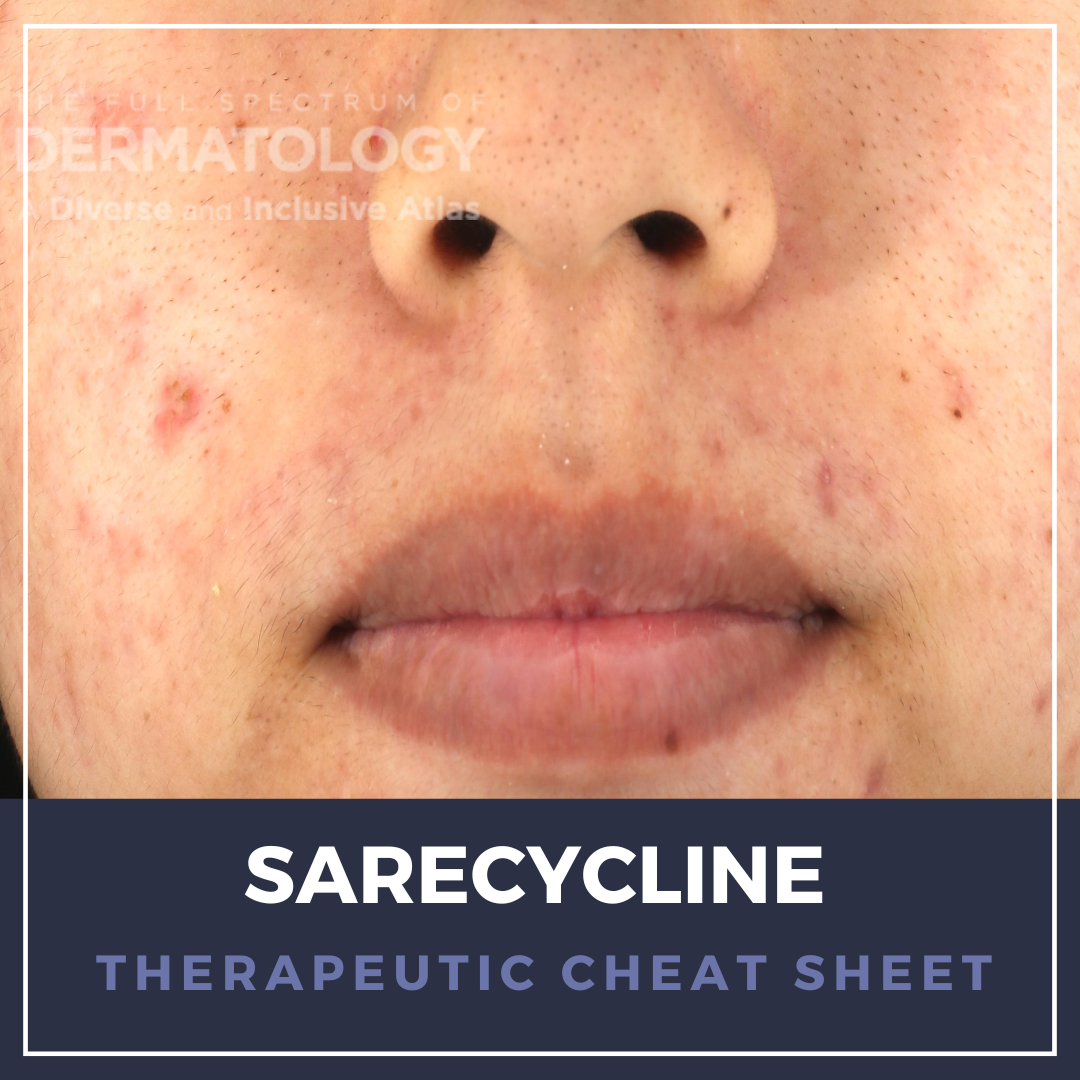 Sarecycline is a third-generation, narrow-spectrum tetracycline developed specifically for the treatment of acne vulgaris. It is distinguished by its weight-based once-daily dosing, favorable side effect profile, and relative microbiome-sparing compared with older tetracyclines. We continue our series, Therapeutic Cheat Sheet, with a closer look at Sarecycline.
� …
Sarecycline is a third-generation, narrow-spectrum tetracycline developed specifically for the treatment of acne vulgaris. It is distinguished by its weight-based once-daily dosing, favorable side effect profile, and relative microbiome-sparing compared with older tetracyclines. We continue our series, Therapeutic Cheat Sheet, with a closer look at Sarecycline.
� …
 Sarecycline is a third-generation, narrow-spectrum tetracycline developed specifically for the treatment of acne vulgaris. It is distinguished by its weight-based once-daily dosing, favorable side effect profile, and relative microbiome-sparing compared with older tetracyclines. We continue our series, Therapeutic Cheat Sheet, with a closer look at Sarecycline.
� …
Sarecycline is a third-generation, narrow-spectrum tetracycline developed specifically for the treatment of acne vulgaris. It is distinguished by its weight-based once-daily dosing, favorable side effect profile, and relative microbiome-sparing compared with older tetracyclines. We continue our series, Therapeutic Cheat Sheet, with a closer look at Sarecycline.
� … 

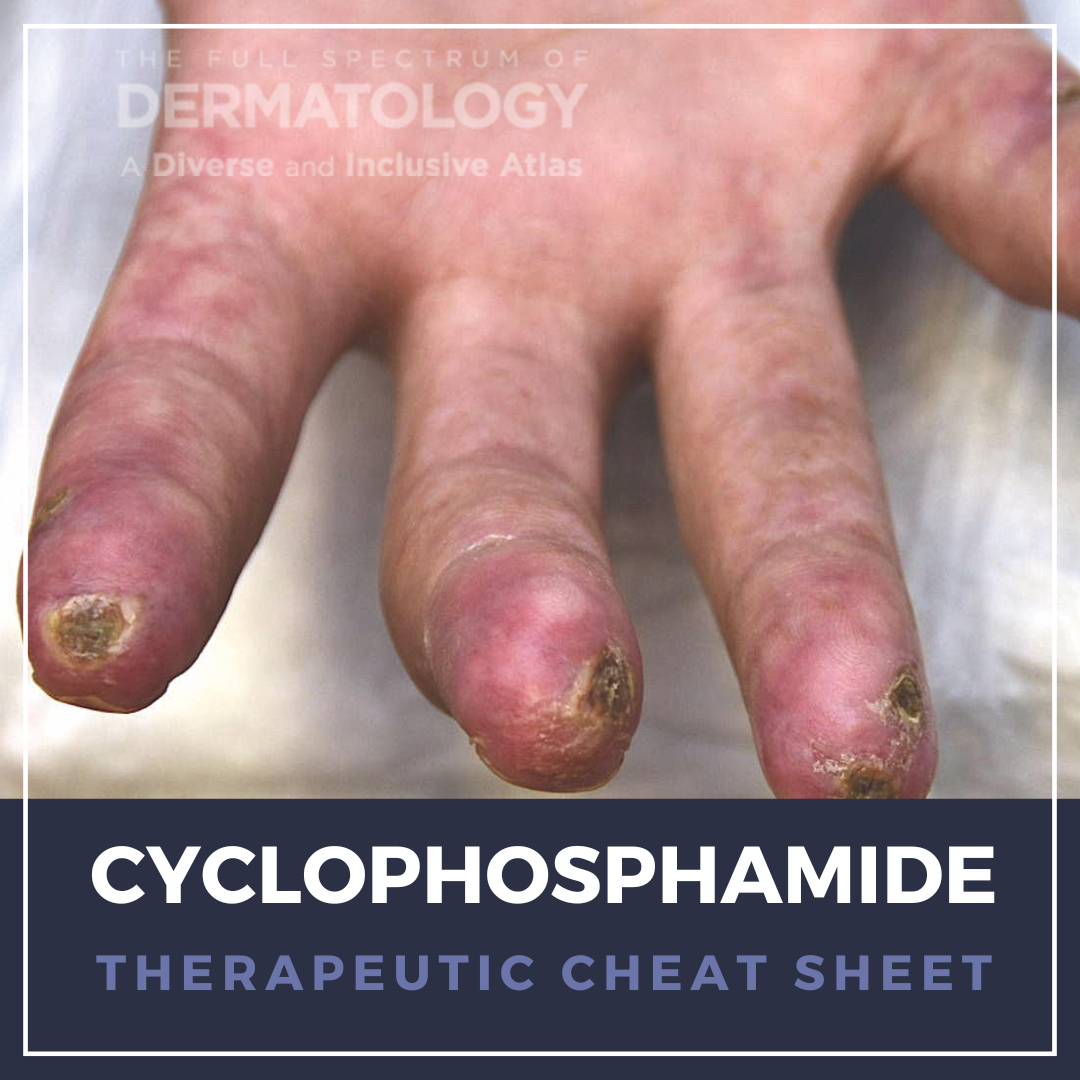 Cyclophosphamide, an alkylating agent introduced in the 1950s, has long served as a cornerstone therapy in rheumatology and oncology for its potent cytotoxic and immunosuppressive effects. In dermatology, it has been employed as a rescue agent for severe, refractory autoimmune and inflammatory skin diseases, particularly those associated with systemic connective tissue disorders. Its role spans co …
Cyclophosphamide, an alkylating agent introduced in the 1950s, has long served as a cornerstone therapy in rheumatology and oncology for its potent cytotoxic and immunosuppressive effects. In dermatology, it has been employed as a rescue agent for severe, refractory autoimmune and inflammatory skin diseases, particularly those associated with systemic connective tissue disorders. Its role spans co … 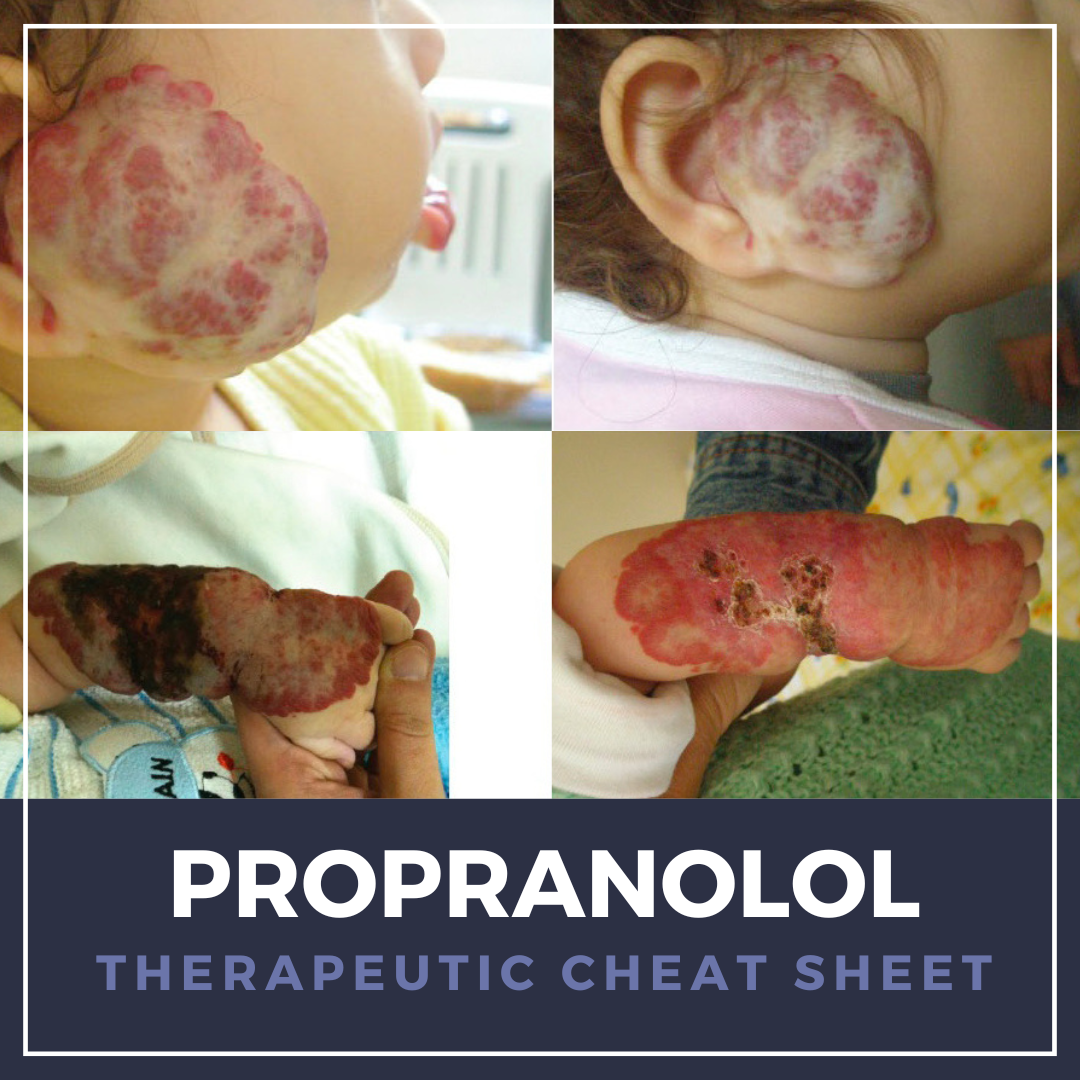 Propranolol, a nonselective β-adrenergic blocker introduced in the 1960s, remains a cornerstone therapy in cardiology for hypertension, angina, and migraine prophylaxis. It has since gained transformative use in dermatology following the serendipitous discovery of its efficacy in infantile hemangiomas (IH), becoming the first FDA-approved systemic therapy for proliferating IH in 2014 given its va …
Propranolol, a nonselective β-adrenergic blocker introduced in the 1960s, remains a cornerstone therapy in cardiology for hypertension, angina, and migraine prophylaxis. It has since gained transformative use in dermatology following the serendipitous discovery of its efficacy in infantile hemangiomas (IH), becoming the first FDA-approved systemic therapy for proliferating IH in 2014 given its va … 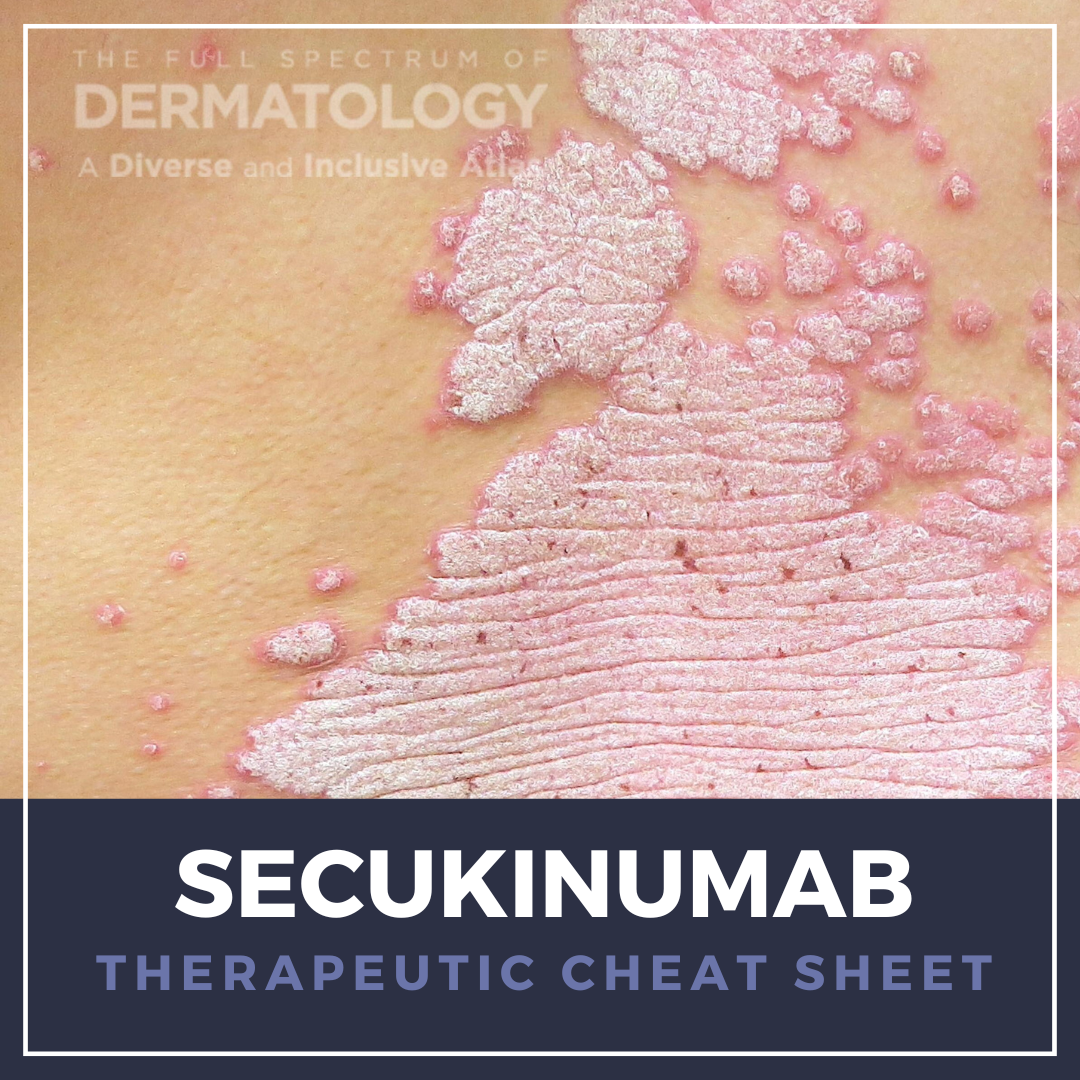 Secukinumab is a recombinant human monoclonal immunoglobulin IgG1κ antibody that selectively targets interleukin-17A (IL-17A), a key effector cytokine in the Th17 pathway implicated in the pathogenesis of psoriasis. With its high target specificity, rapid onset, sustained efficacy, and favorable safety profile, secukinumab has become a mainstay in the treatment of psoriasis and other inflammatory …
Secukinumab is a recombinant human monoclonal immunoglobulin IgG1κ antibody that selectively targets interleukin-17A (IL-17A), a key effector cytokine in the Th17 pathway implicated in the pathogenesis of psoriasis. With its high target specificity, rapid onset, sustained efficacy, and favorable safety profile, secukinumab has become a mainstay in the treatment of psoriasis and other inflammatory … 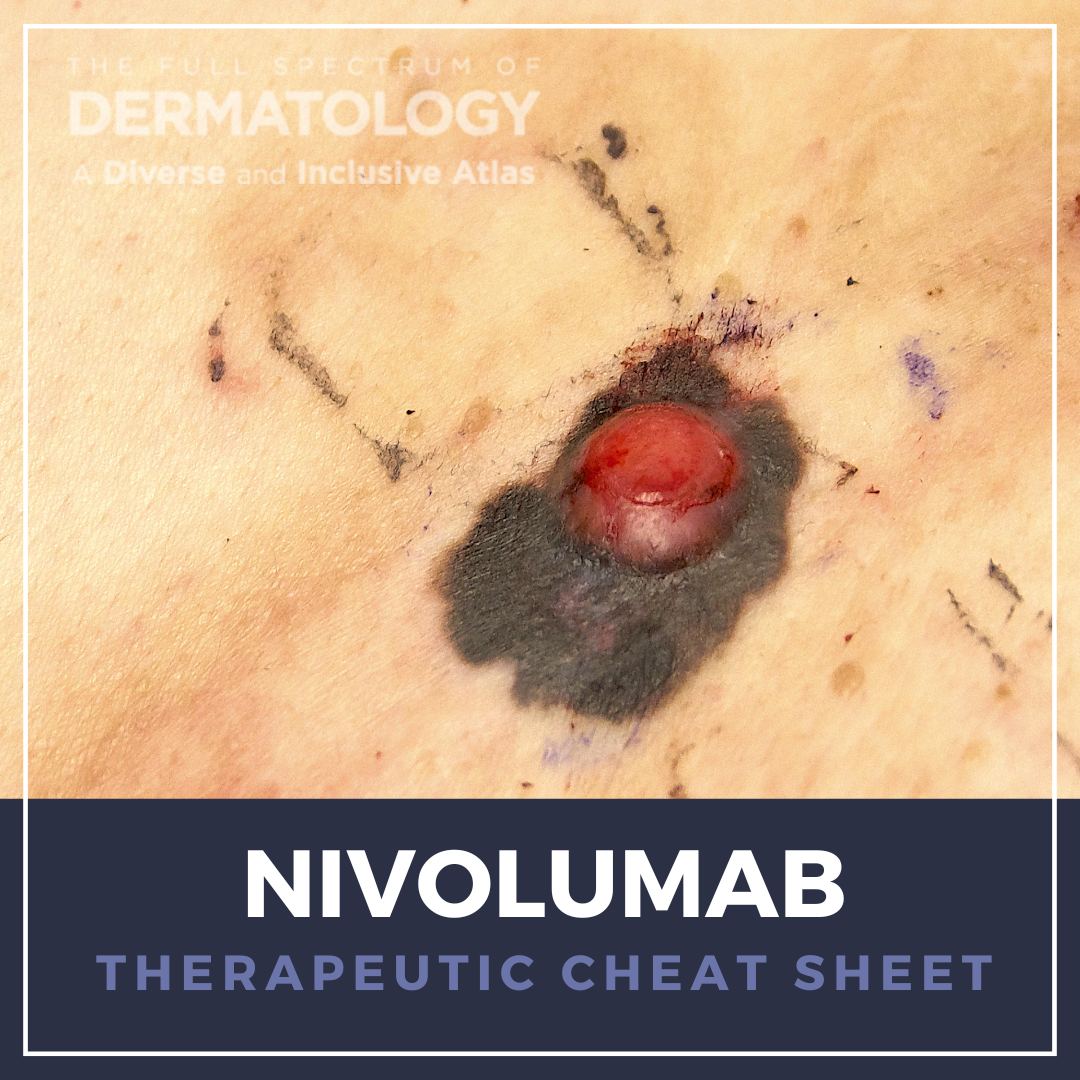 Nivolumab, a programmed death-1 (PD-1) immune checkpoint inhibitor, is a cornerstone in the evolving field of immuno-oncology. Originally developed for advanced cancers, nivolumab functions by blocking PD-1–mediated immune suppression, thereby enhancing T-cell–mediated antitumor responses. In dermatology, its relevance has grown not only because of its utility in melanoma treatment and cutaneo …
Nivolumab, a programmed death-1 (PD-1) immune checkpoint inhibitor, is a cornerstone in the evolving field of immuno-oncology. Originally developed for advanced cancers, nivolumab functions by blocking PD-1–mediated immune suppression, thereby enhancing T-cell–mediated antitumor responses. In dermatology, its relevance has grown not only because of its utility in melanoma treatment and cutaneo …